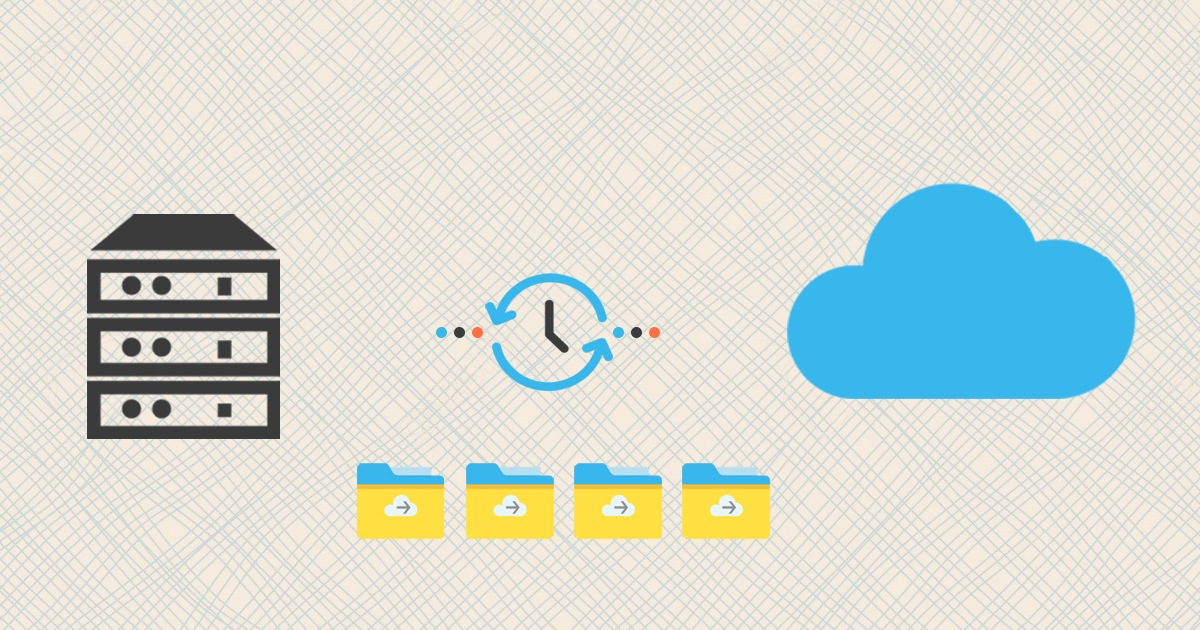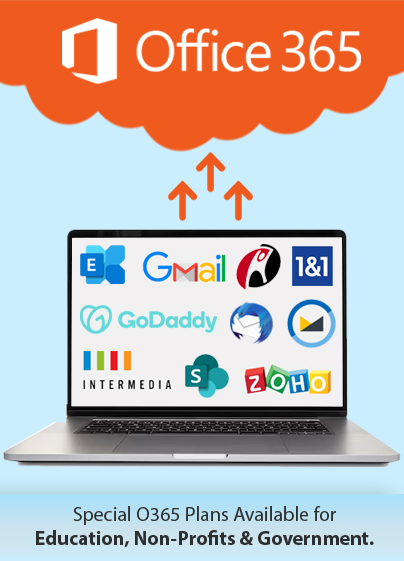
When Is Hybrid Migration to Office 365 Right for You?
- Introduction
- What is Office 365 Hybrid Migration?
- Difference Between Cutover, Staged, and Hybrid Migration
- Why Choose Hybrid Over Other Migration Types?
- What Are the Office 365 Hybrid Migration Prerequisites?
- How Does Office 365 Hybrid Setup Work?
- Benefits of Migrating from Exchange 2013 or 2016 to Office 365
- Hybrid Exchange Migration to Office 365: When to Consider It?
- When is a Hybrid Migration Not the Right Choice?
- Why You Should Choose Apps4Rent for Office 365 Hybrid Migration?
- Frequently Asked Questions About Office 365 Hybrid Migration
Most companies believe that ‘migrations are complex’ and fear that migrations would cause drastic changes. They don’t want to rock a smooth sailing ship.
Change often poses challenges, especially when it involves intricate migration processes. Yet, in the ever-evolving world of modern business, one truth shines bright: cloud migration isn’t just a convenience—it’s a strategic necessity. A transformative solution awaits if your enterprise relies on on-premises Microsoft Exchange Servers.
This transformation revolves around the magic of cloud technology, rendering clunky physical hardware obsolete. Through collaboration with a trusted cloud solutions provider, you embark on a cost-effective journey, with a simple monthly fee per user, granting you access to premium hosted Exchange services. This transition brings many benefits, from uninterrupted server uptime and fortified security to access to cutting-edge applications.
Now, let’s delve into the intricacies of Office 365 hybrid migration, where we’ll explore more about Office 365 Hybrid Migration, Office 365 hybrid migration prerequisites, and best practices that will pave the way for a seamless transition. So, get ready to elevate your business agility in the digital age.
What is Office 365 Hybrid Migration?
Office 365 hybrid migration is the bridge that allows both your on-premises servers and Office 365 to work together seamlessly. It’s like moving your mailboxes, calendars, tasks, contacts, and emails to Office 365 while keeping your Active Directory (AD) connected.
So, what’s the difference? In a standard migration to Office 365 (also known as O365 migration), all your data from the Exchange Server goes to the cloud through a migration endpoint, and you can decommission your on-premises servers. But in a hybrid migration, your AD data stays on the on-premises server, connected to the Office 365 cloud, and decommissioning isn’t an option.
It may sound complex, and it’s at times. However, there are situations where you have no other choice. To prepare for such scenarios, let’s understand Office 365 hybrid migration step by step.
Difference Between Cutover, Staged, and Hybrid Migration
Organizations planning a move to Microsoft 365 can choose from three primary migration methods: Cutover, Staged, and Hybrid. Each approach offers distinct advantages depending on the organization’s size, infrastructure, and coexistence requirements.
-
Cutover Migration
A cutover migration transfers all mailboxes and data from on-premises Exchange to Office 365 in a single batch. This approach is best suited for small to medium-sized businesses, typically with fewer than 2,000 mailboxes. It offers a simple and fast transition, but requires all users to switch at once. Post-migration, there is minimal coexistence, and the on-premises Exchange server can be decommissioned.
-
Staged Migration
Staged migration moves mailboxes in phases, allowing a gradual transition to Exchange Online. It is typically used by larger organizations with more than 2,000 mailboxes or those running legacy servers such as Exchange 2003 or 2007. While it enables continued use of both environments during the migration, coexistence features are limited compared to hybrid deployments.
Understanding the key differences in timeline, user impact, and coexistence features can help organizations determine the best fit when evaluating staged migration vs cutover approaches.
-
Hybrid Migration
A hybrid migration to Office 365 offers full integration between on-premises Exchange and Exchange Online. Ideal for enterprises with complex requirements, it supports seamless coexistence, advanced features like single sign-on and shared calendars, and gradual mailbox moves. The hybrid approach is recommended for Exchange 2010, Exchange 2013, and Exchange 2016 environments. It is especially beneficial for organizations requiring compliance, long-term coexistence, or a flexible, phased migration strategy.
Hybrid Exchange migration to Office 365 is the most advanced option, accommodating scenarios such as Exchange 2010 to Office 365 hybrid migration step by step, Exchange 2013 hybrid migration to Office 365, and Exchange 2016 to Office 365 hybrid migration step by step. For organizations seeking a detailed roadmap, an Office 365 hybrid migration guide can help streamline the transition.
Summary of Key Differences
- Scale: Cutover for small orgs, staged for large legacy systems, hybrid for large/complex needs
- Coexistence: Full with hybrid, limited with staged, none with cutover
- Complexity: Cutover is simplest, hybrid is most flexible, but complex
- Use Case: Cutover for quick moves, staged for phased transitions, hybrid for enterprise-grade migration, and compliance needs
Why Choose Hybrid Over Other Migration Types?
A hybrid Exchange migration to Office 365 is often the preferred choice for enterprises with complex environments, regulatory requirements, or the need for a phased migration strategy. It supports Exchange Online hybrid migration while maintaining full integration with on-premises systems.
-
Seamless Coexistence with Minimal Disruption
Hybrid migration allows Exchange and Office 365 to operate together. It supports synchronized calendars, contacts, and mail flow, helping users stay productive throughout the migration process.
-
Flexibility for Large and Complex Environments
This method is well-suited for organizations with a high volume of mailboxes or complex infrastructure. It allows for gradual migration by department or business priority.
-
Support for Compliance and Regulatory Requirements
Microsoft Exchange hybrid migration to Office 365 enables organizations to keep sensitive data on-premises to meet legal and regulatory obligations, while moving less critical mailboxes to the cloud.
-
Enterprise Features and Unified User Experience
Hybrid deployments support single sign-on, shared domains, and cross-environment calendar access, delivering a consistent user experience and enhancing collaboration. For organizations that require ongoing coexistence between cloud and on-premises environments, a well-implemented Office 365 hybrid mail solution offers the scalability and control needed to support long-term operational goals.
-
Reduced Risk and Maintained Continuity
The ability to move mailboxes in stages and conduct thorough testing reduces the risk of service interruptions and helps maintain business continuity throughout the transition.
This approach supports various scenarios, including Exchange 2010 hybrid migration to Office 365, Exchange 2013 hybrid migration to Office 365, and Exchange 2016 hybrid migration to Office 365. For implementation guidance, refer to a trusted Office 365 hybrid migration guide or consult documentation for the Exchange 2010 to Office 365 hybrid migration step-by-step process.
What Are the Office 365 Hybrid Migration Prerequisites?
Before embarking on your Office 365 hybrid migration journey, ensuring you’ve met the fundamental prerequisites is essential. This will help lay the foundation for a smooth and effective migration with minimal disruptions to your organization’s operations.
- Flexible Migration Timelines: Opt for the minimal hybrid migration approach if you need a patient timeline spanning a few weeks or less. It allows you to tailor the migration schedule to your specific needs.
- Server Compatibility: Ensure your organization uses Exchange 2010, 2013, or 2016 servers on-premises for minimal hybrid migration. Organizations with older Exchange servers may need an upgrade.
- Transition from Directory Sync: If you rely on directory synchronization for user management but plan to discontinue it, the minimal hybrid migration offers a seamless transition. Expect adjustments in user management practices during this transition.
- Prepare for Azure AD Tool: Have a server ready for the Azure Active Directory Synchronization tool installation. It’s crucial for synchronizing user accounts and attributes between your on-premises Active Directory and Office 365.
- Supported Versions: Exchange 2010, 2013, 2016: Hybrid migration is supported only with Exchange 2010, 2013, and 2016. Older versions like Exchange 2007 or 2003 must be upgraded. Using supported versions ensures access to the Hybrid Configuration Wizard and key features like seamless mail flow and calendar sharing.
- Exchange Environment Assessment Checklist: Check Exchange server health, apply all updates, and verify network readiness. Review public folders, shared mailboxes, and Active Directory synchronization. Identify any third-party tools that may be affected by hybrid migration.
- Microsoft 365 Licensing Requirements: Assign appropriate Microsoft 365 or Office 365 licenses before migrating users. Plans like Exchange Online P1/P2, Microsoft 365 E3, or E5 are required. Ensure all users are licensed to access cloud mailboxes and any necessary compliance features.
By addressing these prerequisites, you’ll be well on your way to a successful Office 365 hybrid migration.
How Does Office 365 Hybrid Setup Work?
Implementing a hybrid deployment can take various forms in different network setups. Let’s break down a typical scenario:
Imagine an organization with a single forest and domain, hosting email and calendars on an Exchange server. The network administrator opts for a hybrid deployment to make remote access easier for users through Outlook. They deploy and configure an Azure AD Connect server to sync user credentials for both on-premises and Microsoft 365.
As a part of the prerequisites, the admin will ensure that at least one Exchange Server will have Mailbox (and Client Access roles if needed). Once the organization has procured Microsoft 365/ Office 365 licenses, it must enable the Azure AD authentication system and Azure Active Directory synchronization. Once the prerequisites have been completed, the Hybrid Configuration wizard can be used to deploy the settings.
Here is a sample network topology implementation:
- Each user will use the same username and password for accessing on-premises and Exchange Online resources using Single Sign-On (SSO).
- Both Office 365 mailboxes, as well as the ones locally hosted on-premises, will use the same email domain address.
- Outbound emails are sent via the internet by the on-premises server.
- This infrastructure controls messaging transport and is the relay for Exchange Online, which is a part of Office 365/ Microsoft 365.
- With this implementation, both on-premises and Exchange Online users could share calendar information. Additionally, with this configuration, it’s possible to configure relationships for enabling message tracking across premises, MailTips, and the search feature for notifications.
- Lastly, Exchange Online and on-premises users would use the same URL to access their mailboxes using the Internet.
Hybrid Configuration Wizard Step-by-Step
The Hybrid Configuration Wizard (HCW) simplifies the process of establishing a secure connection between on-premises Exchange and Office 365. It walks administrators through key setup steps for authentication, mail routing, and coexistence features. After launching the wizard from the Exchange Admin Center, sign in with Office 365 admin credentials and choose the hybrid features to enable, such as shared calendar availability and secure mail flow. The wizard configures connectors, federation trust, and DNS records to link both environments. This is a core step in any hybrid exchange migration to Office 365.
Creating Migration Endpoints & Batches
Migration endpoints define how Office 365 connects to the on-premises Exchange environment. Set these up in the Exchange Admin Center or Exchange Online by specifying server details and authentication methods. Once configured, create migration batches to move mailboxes in groups. This phased approach supports both Exchange 2013 hybrid migration to Office 365 and Exchange 2016 hybrid migration to Office 365, providing flexibility and control. Batches can be monitored, paused, or removed as needed for a smooth Exchange Online hybrid migration.
Post-Migration Activities & Validation
After completing a hybrid migration to Office 365, verify that mailboxes, data, and permissions have migrated accurately. Update DNS records like MX and Autodiscover to direct mail flow through Office 365. Reconfigure Outlook and mobile profiles as needed. Confirm that hybrid features such as calendar sharing and mail routing are working correctly before retiring on-premises Exchange servers. This step is essential whether you followed an Exchange 2010 to Office 365 hybrid migration step by step or used an Office 365 hybrid migration guide for later versions.
Benefits of Migrating from Exchange 2013 or 2016 to Office 365
Exchange 2013 or 2016 hybrid migration to Office 365 is a strategic move driven by various factors prioritizing operational efficiency, cost-effectiveness, and the demand for a secure and adaptable workspace.
- Scalability at Your Fingertips: Office 365 is a highly scalable solution catering to businesses of all sizes. It allows you to adjust user licenses based on evolving business requirements. This adaptability is a game-changer, setting it apart from the rigid structures of traditional on-premises Exchange Server setups.
- Cost-Effective Transformation: Shifting to Office 365 transforms your financial Outlook. It transitions your cost model from capital expenditure to operational expenditure. No longer will you be burdened with substantial upfront costs for server hardware or the ongoing expenses of maintenance and upgrades that on-premises systems demand.
- Anywhere, Anytime Access: The cloud-based architecture of Office 365 grants users access to emails, calendars, and applications from anywhere with an internet connection. This level of accessibility is a boon, especially for businesses with remote work policies or frequent travelers among their ranks.
- Assured Security and Compliance: Office 365 doesn’t compromise on security. It comes fortified with robust built-in security features and comprehensive compliance capabilities, ensuring that your organization can confidently handle sensitive data.
- Improved User Experience and Outlook Connectivity: Hybrid migration to Office 365 delivers a smoother and more intuitive user experience across devices. With seamless Outlook integration and real-time synchronization, users enjoy uninterrupted access to mail, calendars, and contacts. Features like shared calendars and global address lists remain functional during the transition, preserving productivity and reducing disruptions.
- Reduced Maintenance and Support Overheads: Migrating to Office 365 shifts infrastructure responsibilities to Microsoft, eliminating the need for routine patching, server maintenance, and upgrades. With built-in backup, high availability, and simplified user support, internal IT teams can focus on strategic initiatives instead of day-to-day upkeep.
Hybrid Exchange Migration to Office 365: When to Consider It
Migrating your email system from on-premises to the cloud can be daunting. Still, it’s one that many businesses are undertaking to take advantage of the benefits of cloud computing. If you’re running Microsoft Exchange Server on your on-premises infrastructure, you can move it to the cloud by performing an Office 365 hybrid migration.
A hybrid migration allows you to gradually move your mailboxes to Office 365 while keeping your on-premises Exchange environment running. This can be a good option if you need more time to decommission your on-premises infrastructure entirely or need to maintain a hybrid environment for compliance reasons.
Hybrid Exchange migration to Office 365 can be a good option if:
- You have several mailboxes to migrate and want to maintain your users’ productivity.
- You need to maintain a hybrid environment for compliance reasons.
- You have some applications tightly integrated with your on-premises Exchange environment, and you still need to be ready to move them to the cloud.
- You need to check if your on-premises infrastructure can migrate to the cloud.
Another way to understand if you need a hybrid exchange migration to Office 365 is to answer the following questions:
- Do some mailboxes need to be on the physical server for legal and compliance reasons?
- Do you need to scale up your system capacity? If yes, would increasing your on-premises server capacity be too expensive?
- Are you sure you want to maintain on-premises and cloud servers running in parallel forever?
If you answered ‘yes’ to any of those questions, then a hybrid migration is the need of the hour.
Organizations with Large Mailbox Counts
Hybrid exchange migration to Office 365 is especially well-suited for organizations with a high volume of mailboxes. It enables phased mailbox moves in manageable batches, minimizing disruption while ensuring continued access for users. This staged approach offers greater flexibility and reduces risk during large-scale migrations.
Need for Coexistence During Migration
Exchange Online hybrid migration allows seamless coexistence between on-premises and cloud mailboxes. Users benefit from uninterrupted access to shared calendars, address lists, and unified domains throughout the transition. This makes hybrid migration essential for businesses that require a gradual shift without affecting day-to-day operations.
Compliance or Regulatory Requirements
For organizations bound by strict compliance or data residency rules, hybrid migration to Office 365 offers a balanced solution. Sensitive mailboxes can remain on-premises while others move to the cloud. This approach supports audit-ready retention, eDiscovery, and policy enforcement across both environments.
When is a Hybrid Migration Not the Right Choice?
Hybrid migration is often a necessity for companies unable to decommission physical servers. Not all businesses require a hybrid cloud environment; it depends on specific needs. If at any point before the hybrid migration, you decide to go with a cloud-based or a physical server only, do that instead and do NOT go with a hybrid migration.
Let’s explore the circumstances in which a hybrid migration might not be your best choice and when you should consider other alternatives.
- Clear Server Preference: If you’ve already chosen between fully cloud-based or on-premises servers, stick with that choice. Hybrid migration is best for a blend of both. If you lean heavily toward one side, skip the hybrid approach.
- Management Complexity: Hybrid setups bring added complexities. Troubleshooting in hybrid cloud Exchange environments can be tricky due to dual configurations. If your team can face difficulties handling the added complexity, rethink hybrid migration.
- Coordination Challenges: Successful hybrid setups require flawless coordination. Maintaining data consistency and updated records on both servers can be challenging. Any discrepancies impact productivity. If coordination is an issue, consider alternative migration.
- Testing the Waves: If you need more certainty about a complete migration, start with small Office 365 components. Assess feasibility and benefits while keeping hybrid flexibility.
- Limited IT Resources or Expertise: A successful hybrid exchange migration to Office 365 requires in-depth technical expertise, particularly in areas like directory synchronization, secure mail routing, and hybrid configuration. For organizations with limited IT staff or experience, managing both on-premises and cloud environments can quickly become overwhelming. In such cases, simpler alternatives like cutover or IMAP migrations may reduce complexity and risk.
- Smaller Organizations with <150 Mailboxes: Hybrid migration to Office 365 is often excessive for businesses with fewer than 150 mailboxes. These smaller environments typically do not need the extended coexistence and gradual rollout that hybrid deployments offer. A cutover migration provides a more efficient, streamlined path by moving all users at once without maintaining a dual infrastructure.
While hybrid migration of Office 365 offers remarkable advantages, evaluating your organization’s specific needs and capabilities is essential.
Apps4Rent Can Help with Office 365 Hybrid Migration
This article helped you understand the suitability of a hybrid migration for your business. If you have more questions, you can always approach our experts! We at Apps4Rent have been offering Office 365 migration services for over a decade. So, whether you want to migrate mailboxes or need further assistance deciding on the type of migration, contact us, and we will help you!
Frequently Asked Questions About Office 365 Hybrid Migration
-
What is hybrid migration in Office 365?
Hybrid migration in Office 365 allows on-premises Exchange servers to integrate with Exchange Online, creating a unified messaging environment. This approach enables phased mailbox moves while maintaining features like shared calendars, global address lists, and synchronized directories. It supports seamless coexistence between on-premises and cloud mailboxes throughout the transition.
-
What is Microsoft 365 Hybrid?
Microsoft 365 Hybrid refers to a setup where an on-premises Exchange environment is connected to Microsoft 365. This configuration supports shared mail flow, directory synchronization, and consistent end-user experiences. It enables organizations to retain control over certain resources while leveraging cloud-based functionality.
-
How many types of migration are there in Office 365?
There are four main Office 365 migration methods:
- Cutover Migration: Moves all mailboxes to Office 365 in a single batch.
- Staged Migration: Transfers mailboxes in phases, typically from Exchange 2003 or 2007.
- Hybrid Migration: Enables ongoing coexistence and staged migration between on-premises Exchange and Office 365.
- IMAP Migration: Moves only emails from non-Exchange systems like Gmail or Yahoo.
-
How to migrate Office 365 from one tenant to another?
Tenant-to-tenant migration involves transferring user data between two separate Office 365 tenants. It includes verifying domains, preparing user accounts, mapping mailboxes, and updating DNS records. Due to its complexity, businesses often rely on experienced providers like Apps4Rent for secure, compliant tenant migrations.
-
Can I perform a hybrid migration from Exchange 2010?
Yes, Exchange 2010 hybrid migration to Office 365 is supported and widely implemented. Using the Hybrid Configuration Wizard, organizations can establish coexistence with Exchange Online and gradually migrate mailboxes without disrupting users.
-
Is Exchange Online required for hybrid migration?
Yes, Exchange Online is essential for hybrid migration to Office 365. It serves as the cloud-based destination for mailboxes and enables integration with the on-premises Exchange environment for seamless coexistence and centralized management.
-
How long does hybrid migration take?
The duration of a hybrid migration depends on several variables, including mailbox size, total user count, and available network bandwidth. While some migrations may complete in a few days, large-scale or enterprise deployments may require several weeks. Following an Office 365 hybrid migration guide or consulting experts like Apps4Rent can help ensure timelines are met efficiently.
Apps4Rent – Tier 1 Office 365 Cloud Solution Provider






